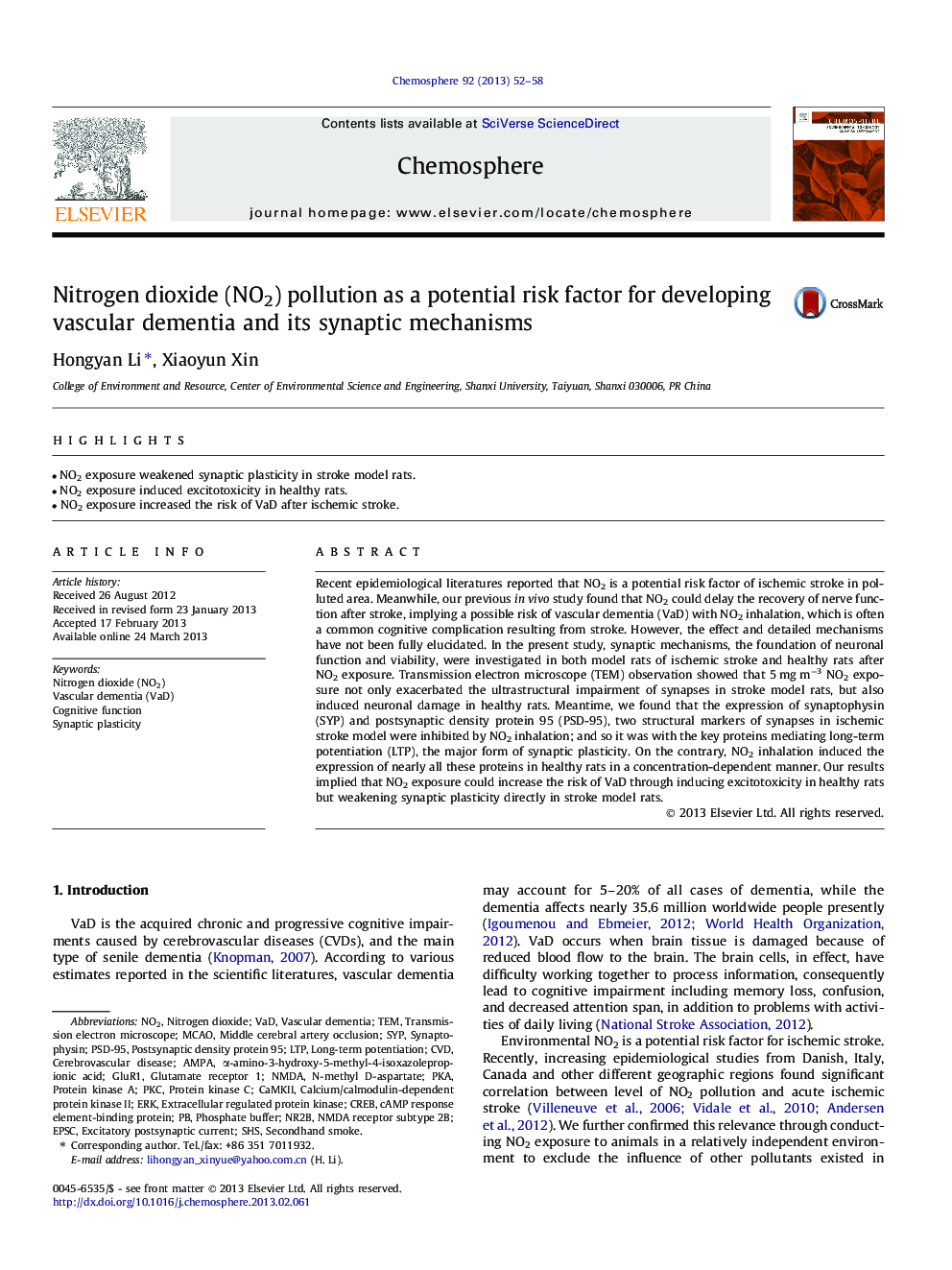| Article ID | Journal | Published Year | Pages | File Type |
|---|---|---|---|---|
| 4409322 | Chemosphere | 2013 | 7 Pages |
•NO2 exposure weakened synaptic plasticity in stroke model rats.•NO2 exposure induced excitotoxicity in healthy rats.•NO2 exposure increased the risk of VaD after ischemic stroke.
Recent epidemiological literatures reported that NO2 is a potential risk factor of ischemic stroke in polluted area. Meanwhile, our previous in vivo study found that NO2 could delay the recovery of nerve function after stroke, implying a possible risk of vascular dementia (VaD) with NO2 inhalation, which is often a common cognitive complication resulting from stroke. However, the effect and detailed mechanisms have not been fully elucidated. In the present study, synaptic mechanisms, the foundation of neuronal function and viability, were investigated in both model rats of ischemic stroke and healthy rats after NO2 exposure. Transmission electron microscope (TEM) observation showed that 5 mg m−3 NO2 exposure not only exacerbated the ultrastructural impairment of synapses in stroke model rats, but also induced neuronal damage in healthy rats. Meantime, we found that the expression of synaptophysin (SYP) and postsynaptic density protein 95 (PSD-95), two structural markers of synapses in ischemic stroke model were inhibited by NO2 inhalation; and so it was with the key proteins mediating long-term potentiation (LTP), the major form of synaptic plasticity. On the contrary, NO2 inhalation induced the expression of nearly all these proteins in healthy rats in a concentration-dependent manner. Our results implied that NO2 exposure could increase the risk of VaD through inducing excitotoxicity in healthy rats but weakening synaptic plasticity directly in stroke model rats.
